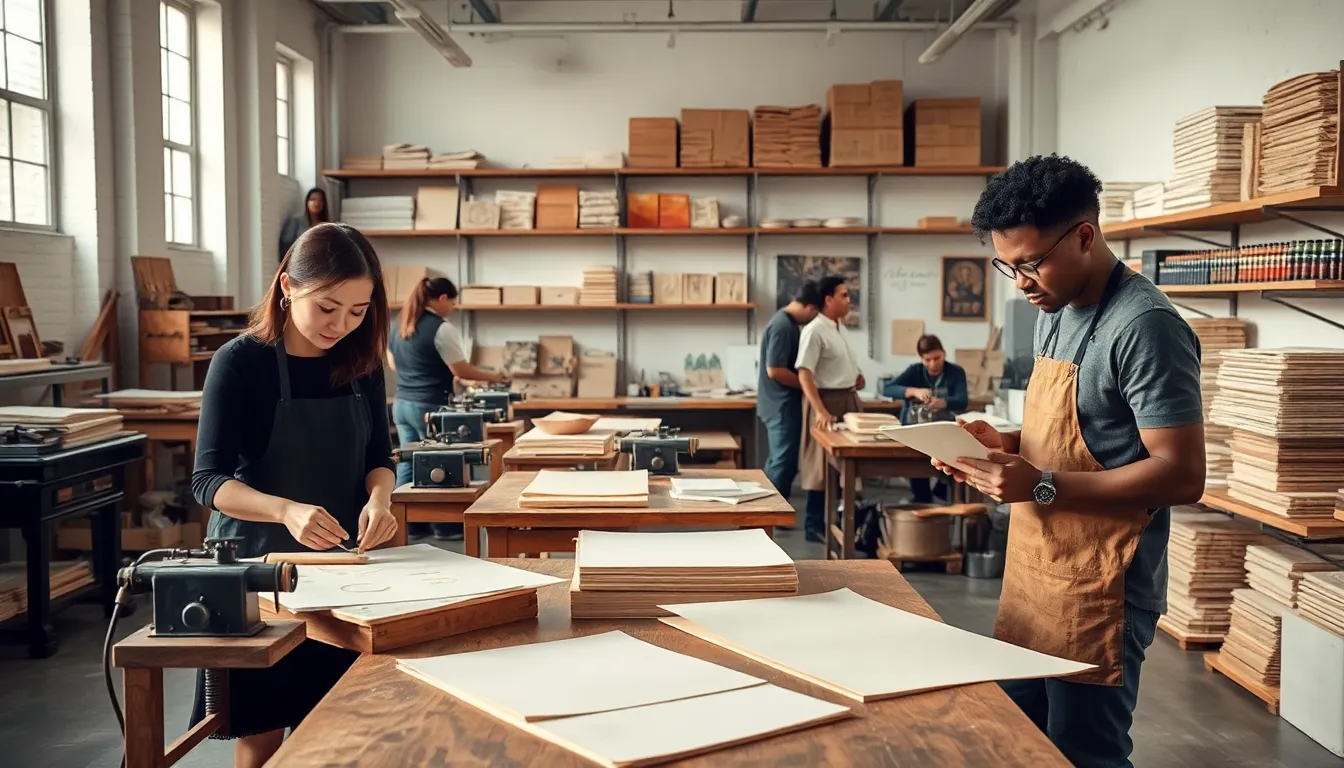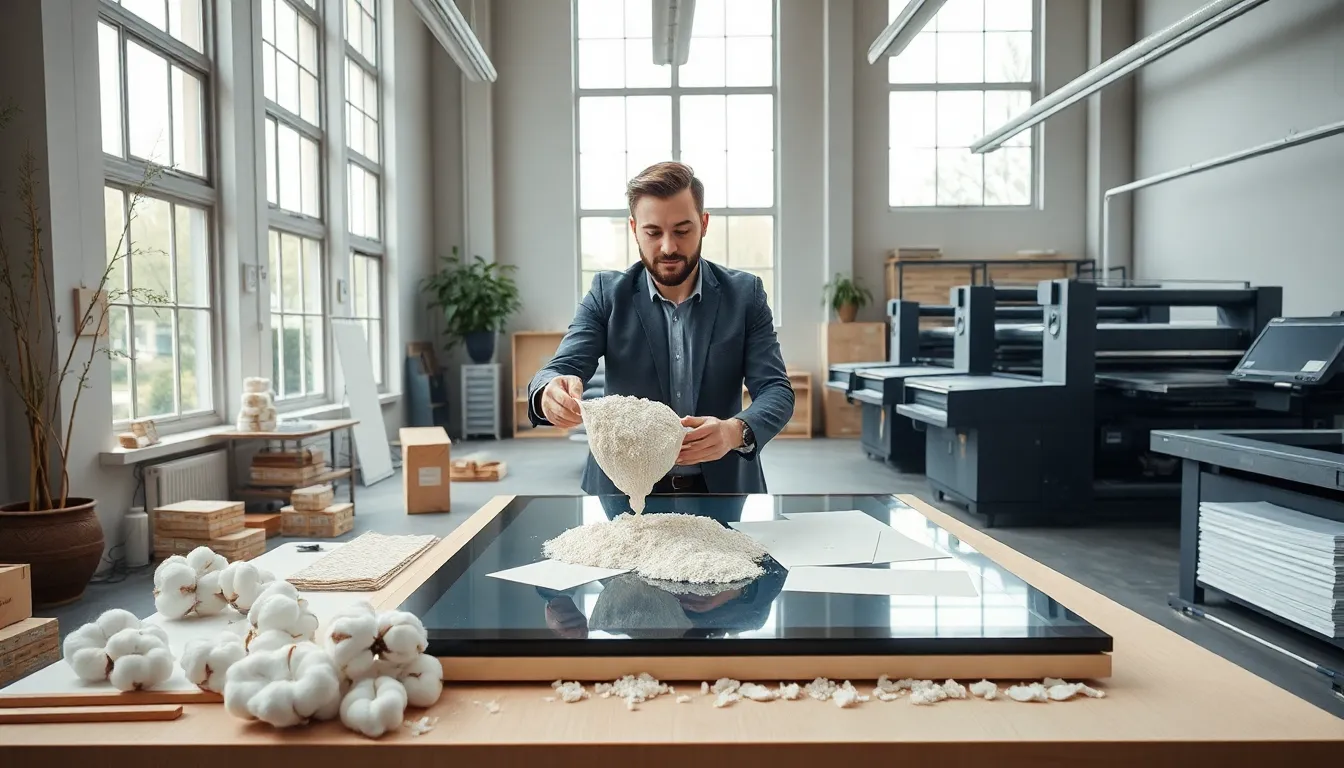Ever wondered how a simple tree transforms into crisp, clean paper? Welcome to the world of papigrafifico, where ancient traditions meet modern techniques. It’s a fascinating journey filled with history, innovation, and a sprinkle of environmental responsibility. Join us as we unfold the layers of papermaking, leaving no pulp unturned.
Table of Contents
ToggleUnderstanding Papigrafifico: Origins and Significance

Papigrafifico traces its roots back to ancient civilizations. The art of papermaking began in China during the Han dynasty, around 105 AD. The technique involved using mulberry bark and hemp, leading to the creation of a medium that would revolutionize communication. As cultures exchanged knowledge, papermaking spread across Asia, Europe, and eventually the entire globe.
Over centuries, papigrafifico has emerged as more than just a crafting method. It symbolizes intellectual progress and creativity. Historical texts, incredible artworks, and scientific advancements were all recorded on paper. The significance of papigrafifico can be seen in how societies document ideas and stories, linking generations through written word.
Understanding the origins of papigrafifico illuminates its significance in shaping human experience. The art of turning raw materials into a medium for communication has evolved, yet its essence, connecting people through ideas, remains unchanged.
The Papermaking Process: From Raw Materials to Finished Product
The process of papigrafifico is a dance between nature and craftsmanship. It starts with raw materials such as wood, cotton, or recycled paper. These substances are broken down into pulp.
- Pulping: This first step is crucial. Materials are either mechanically processed or chemically treated to create pulp. Each choice affects quality.
- Sheet Formation: The pulp is then diluted with water and poured onto a flat screen. A gentle shake allows the fibers to interlock, forming sheets as the water drains away.
- Pressing and Drying: Once formed, sheets of wet paper are pressed to remove excess moisture. They are then hung or laid flat to dry further, resulting in a final product ready for use.
- Finishing Touches: Finally, the paper may undergo additional treatments for texture, color, or durability. Here, creativity takes the lead, leading to a myriad of products ranging from notebooks to art supplies.
Understanding this intricate process reveals the skill and artistry involved in papigrafifico. Each piece tells a story, tracing back to its origins in nature.
Innovations in Papigrafifico: Modern Techniques and Technologies
As technology advances, so does the art of papigrafifico. Modern innovations have transformed traditional methods into streamlined processes.
One remarkable advancement is the introduction of digital printing technology. This allows more efficiency and personalization. High-quality prints can now be produced using less water and energy than in traditional methods. Also, 3D paper printing has opened up new avenues for creativity, enabling designers to create intricate structures previously unimaginable.
Sustainability in Papigrafifico: Environmental Considerations
With growing environmental concerns, the papermaking industry faces pressure to adapt. Innovations aren’t only about speed and efficiency: they include a strong focus on sustainability. Manufacturers are increasingly investing in eco-friendly raw materials, such as bamboo and recycled fibers. Renewable energy sources are now powering production facilities, minimizing their carbon footprint. This shift is not just a trend: it’s a necessity for future generations.
Economic Impact of Papigrafifico on Local Communities
The papigrafifico industry holds significant economic value, especially in local communities. It provides direct jobs to thousands, from harvesters to artisans, driving local economies.
Also, communities that specialize in papermaking often see a boost in tourism. Visitors flock to see traditional methods and purchase unique paper products. This not only enhances local culture but also encourages craftsmanship and skill transfer across generations.
Besides, the industry contributes to global markets. As demand for high-quality paper products rises, regions known for their papigrafifico boost exports. These economic benefits create a ripple effect, fostering community growth and development.
Cultural Relevance of Papigrafifico Across Different Regions
Papigrafifico is not a one-size-fits-all try: it varies distinctly across cultures. In Japan, handmade washi paper is revered for its durability and beauty. It combines traditional methods with meticulous craftsmanship, reflecting beauty in simplicity.
In contrast, Italy is famous for its richly textured papers, often used in fine art. Local artisans pride themselves on techniques passed down through generations, maintaining cultural heritage while innovating within their craft.
Each region infuses its identity into papigrafifico, making it a vibrant part of cultural exchange. The artistry involved showcases local resources and traditions, connecting people through shared practices.
Future Trends in Papigrafifico: What Lies Ahead
Looking ahead, the future of papigrafifico is brimming with possibilities. The trend toward sustainability will maintain momentum, resulting in greener production practices.
Digitalization will continue transforming how papers are designed and produced, bringing forth innovations we can hardly envision. Imagine a world where paper can self-repair or change texture at the touch of a button.
Besides, as communities strive to preserve their cultural practices, a resurgence in artisanal methods may coexist with modern technologies. There is a palpable excitement in how these two worlds may work in harmony, leading to novel forms of art and communication.





